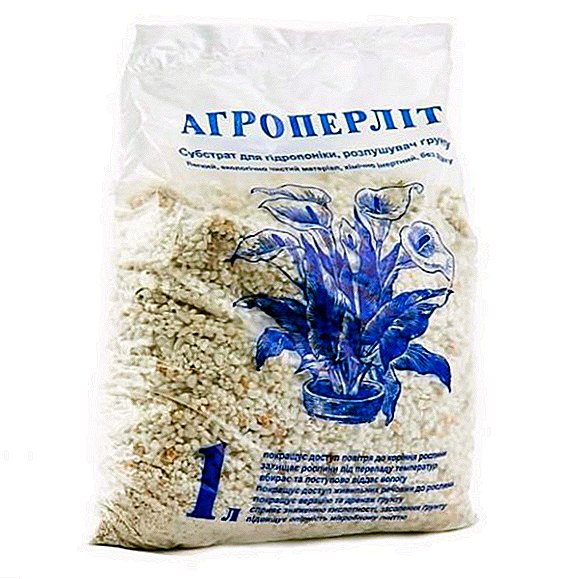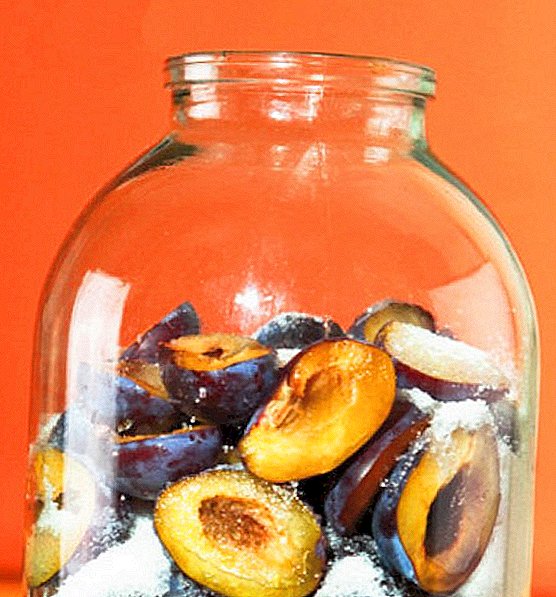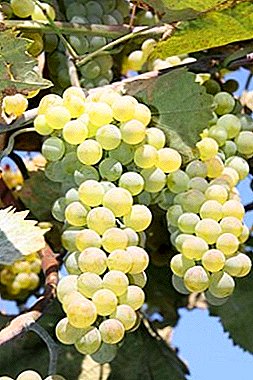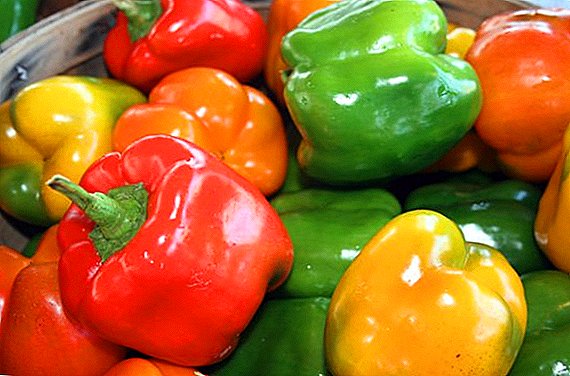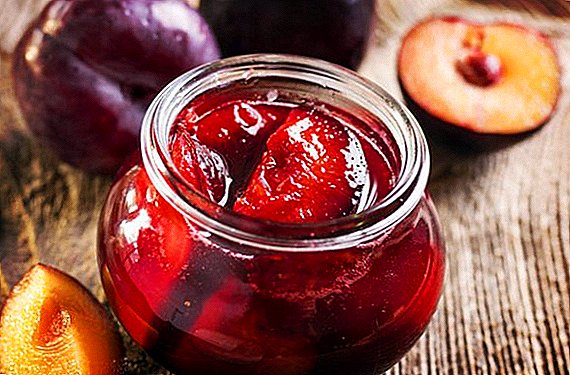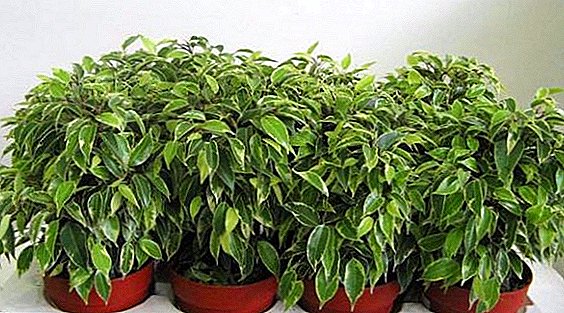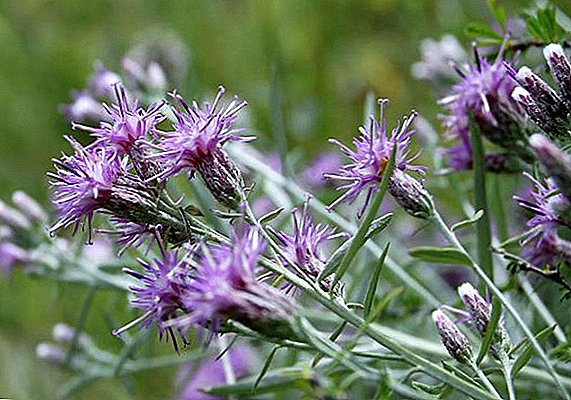 Many plants, in addition to decorative functions, also have a medicinal effect on the human body. One of them is sausurey, or gorkusha. This is not the most beautiful herb has gained great popularity among adherents of traditional medicine. Let's find out what it looks like, how useful it is, how to prepare it, and whether there are any contraindications for consuming sausage.
Many plants, in addition to decorative functions, also have a medicinal effect on the human body. One of them is sausurey, or gorkusha. This is not the most beautiful herb has gained great popularity among adherents of traditional medicine. Let's find out what it looks like, how useful it is, how to prepare it, and whether there are any contraindications for consuming sausage.
Botanical description
Saussurea (in Latin Saussurea), or Gorkush, refers to the perennial grass of the Astrov or Compositae family. It is a plant up to 60 cm high, blooming in June-July, sometimes until September. It has the following characteristics:

- stems - with fissionable bark and spiderweb-felted pubescence;
- leaves - lanceolate, alternate, sessile, from whole to pinnorassisechennyh, dark green color;
- flowers - bisexual, tubular, usually pink or with a violet tinge, combined into inflorescences in the form of baskets, are single;
- the fruit is a brown achene with a rather long feather-like parachute;
- root - woody, diameter up to 3 cm.
Did you know? The delicate purple flower of Ramonda Serbian is called the "phoenix" for its ability to come back to life after complete drying. The Russian botanical journal of 1928 describes a case when water accidentally hit the herbarium with this plant, and a completely dry flower bloomed!
Distribution and habitat
Grows in Europe, Asia and North America. Often found in Siberia, Altai, Transbaikalia and Central Asia. Usually settles in zones of steppe and mountain valleys. Most species of saxurey grow in alpine and subalpine mountain belts — in meadows, scree and rocks, stony slopes, and mountain tundra.
Depending on the variety, it can settle in both salt marshes and solonets meadows (bitter and salt marsh), and in the mountains at an altitude of about five kilometers (gnafaliform and glacial). This remarkable plant can often be found in the Himalayas, Tibet, Tien Shan, Pamir, Karakorum.
Chemical composition
The chemical composition of the plant began to be studied in detail only after identifying its beneficial properties for the human body. According to research, sassyurea contains:
- tannins - up to 2%;
- sesquiterpene lactones (yanerin, repin, cinaropicrin) - 2.5%;
- flavonoids (apigenin, quercetin, hyperoside) - about 1%.
In addition, the plant contains organic acids (including citric, succinic, and malic), essential oils, coumarins (esculetine and umbelliferone), alkaloids (cossyurin and cushtin), triterpene saponins (amyrin and oleanolic acid aglycones).  A wide range of microelements are presented, the main of which are:
A wide range of microelements are presented, the main of which are:
- zinc (Zn);
- magnesium (Mg);
- iron (Fe);
- copper (Cu).
Did you know? Probably, everyone knows the benefits of blueberries for the eyes. However, in addition, it is one of the main means of homeopathy for the treatment of acute intestinal disorders. This contributes to its high content of anti-inflammatory, astringent and tannins.
Common types of bitter
- Ivolist The height of the grass is up to 40-60 cm, it has elongated leaves and pink-purple or pink flowers. It is found in Altai, Yakutia, Buryatia, Irkutsk and Chita regions, Krasnoyarsk Territory. It grows in meadows, in plains and mountain steppes. Only the terrestrial part of the plant has healing properties.
- Bitter Plant height - 15-60 cm. Furous and straight stem, pink and white flowers. It blooms from July to September. It is found on the steppe and solonchak meadows of the Far East, Central Asia, Ukraine, Western Siberia and the European part of Russia. Medicinal properties of the plant has a root.
- Burdock. Height up to 60 cm, the root of the plant has found its application in folk medicine.
- Wrapped up The height of the stem - 10-35 cm. Stems - hollow, bare, fleshy. The flowers are gray-purple with a size of about 1.5 cm. It blooms in July and August. Occurs on rocky slopes, pebbles, common in Eastern Siberia.



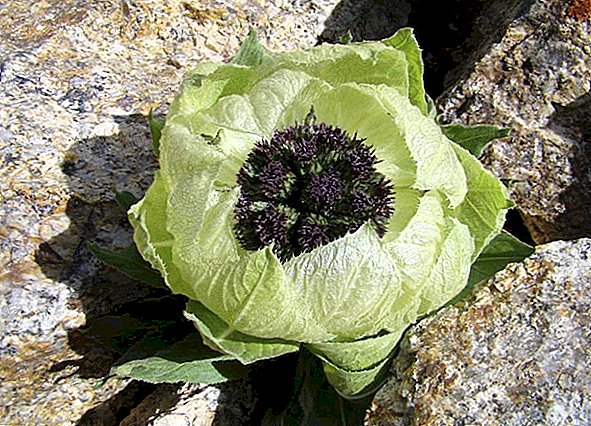
Beneficial features
Tinctures and decoctions of bitter have the following useful properties:
- antibacterial and immunomodulatory effects;
- anthelmintic (antiparasitic) action;
- anti-inflammatory effects;
- normalize hormone levels;
- improve liver function, have a choleretic effect;
- regulate cholesterol absorption;
- speeds up the metabolism and helps fight excess weight.
The pronounced antiparasitic effect is due to the fact that the biological components of the plant destroy the outer membrane of helminth cells, which leads to their death (pinworms, roundworm, opistorha, Giardia).
Antiparasitic drugs are also apricot seeds, watermelon seeds, red onions, birch bark, and figs.
Polysaccharides and organic acids contained in sausurea contribute to the strengthening of immunity, suppression of the action of pathogenic bacteria and improvement of the intestinal microflora.  Steroid compounds of the herb effectively affect the breakdown of low-density lipoprotein, which is an important factor for weight loss.
Steroid compounds of the herb effectively affect the breakdown of low-density lipoprotein, which is an important factor for weight loss.
Important! Before you apply sassureyu for medicinal purposes, be sure to consult with your doctor. This is especially important if you have any serious and chronic diseases.
Medical applications
In folk recipes, it has long been used sausurey for the treatment and prevention of many diseases. For medical purposes, both the root of the plant and its surface part have been applied.
The remedy is used to treat the following ailments:
- Giardiasis, opisthorchiasis and mix-invasions;
- toxoplasmosis;
- diseases of the joints - rheumatism, polyarthritis;
- digestive problems - colitis, gastritis, diarrhea;
- skin diseases;
- bronchitis and other pulmonary diseases;
- inflammatory processes, high temperature;
- violation of metabolic processes;
- prophylaxis and adjuvant for malaria.

Contraindications
In some diseases, psychosis can be dangerous to human health. It should not be used when:
- thrombophlebitis;
- increased blood viscosity;
- intestinal diseases;
- chronic constipation;
- hypertension.
Important! If you experience side effects such as nausea, gastrointestinal upset, fever, skin reactions, you should immediately stop taking sassureyi and seek help from a medical institution.
Harvesting and storage of raw materials
The roots of gorkusha are dug out in the fall, when the leaves and stalks of the plant die. After digging, they must be thoroughly cleaned from the ground, cleaned, crushed with a knife and dried in a dark and well-ventilated room. Be sure to ensure that the plant is not under the influence of sunlight, otherwise it will lose its healing properties.  Sausurean root burdock Raw materials can also be dried in an electric dryer at a temperature not higher than 45-50 degrees Celsius.
Sausurean root burdock Raw materials can also be dried in an electric dryer at a temperature not higher than 45-50 degrees Celsius.
Familiarize yourself with the beneficial properties of the top 10 most popular medicinal plants: echinacea, dog rose, chamomile, horseradish, valerian, aloe, mint, sage, hawthorn, and wormwood.
The grass is collected during flowering - from early summer to September. Plants are cut with a knife or pruner at the base. Flowers and leaves are cut and dried with a thin layer on a flat surface in a dark, well-ventilated area. So that the raw material is not damp and rotten, it is necessary to shake it up periodically.
Herbal collection should be stored in a bag made of natural fabric or glass container. Shelf life - no longer than two years.
So, now you know, what is useful for sausage and how it affects the human body. However, do not forget that any remedy can be both medicine and poison. It all depends on the dosage and your health. Therefore, before using any means of traditional medicine you should definitely consult with a qualified doctor. You will be healthy!


